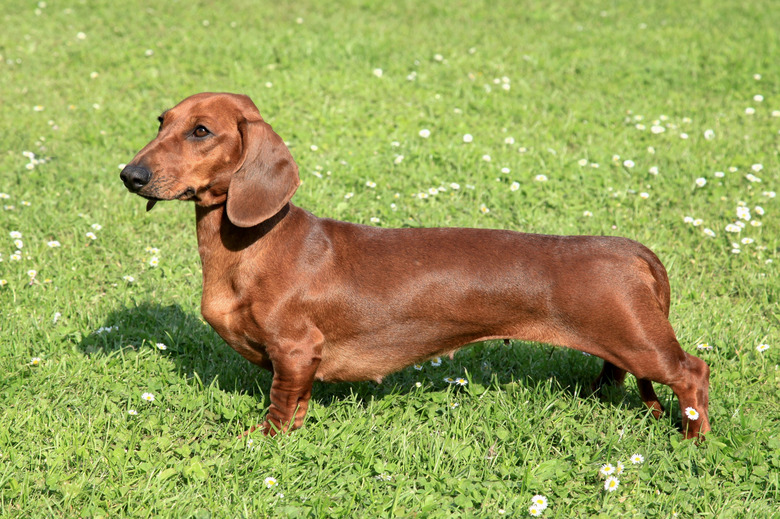How Effective Are Spinal Disk Surgeries On Dogs?
If your dog suffers from spinal disc disease, he's likely in pain and possibly immobile. Depending on his diagnosis, your vet might start with conservative treatment — primarily rest and medications. If that doesn't work, surgery might be your best option. Your vet will refer you to a veterinary neurologist for the actual operation. While outcomes vary depending on severity, spinal disc surgery is effective for the most dogs if performed within an appropriate time frame.
Canine Disc Disease
In between each of your dog's vertebrae is a disc consisting of a harder outer ring and a softer, gel-like shock-absorbing inner ring. Intervertebral disc disease occurs when the softer material starts hardening and the disc bulges into the adjacent spinal cord, putting pressure on it. Mild symptoms include reluctance to climb stairs or into a car, while more severely affected dogs wobble or don't want to walk and are in obvious pain. Initially mild symptoms can worsen over time. In a worst-case scenario, when a dog's spinal cord is very damaged, his hind end becomes paralyzed and he loses control of his bladder and bowels.
Affected Breeds
While any dog might develop spinal disc disease, certain breeds are predisposed to this condition because of their physical makeup. These include the chondrodystrophoid types, canines bred for a type of dwarfism. Examples include the dachshund, beagle, cocker spaniel, poodle, basset hound, Pekingese, shih tzu and Lhasa apso. Commonly affected large breed dogs include the German shepherd, Doberman pinscher and Labrador retriever.
Surgery
Prior to surgery, your dog undergoes X-rays and a myelogram — an X-ray test that includes a dye injection around the spinal cord — to locate the part of the spinal cord involved. During the operation, known as a hemilaminectomy, the surgeon removes a bone section above the spinal cord and removes the herniated material from the disc. This relieves pressure on the spinal cord.
Effectiveness
Spinal disc disease is grouped into five distinct stages, ranging from 1 to 5 in terms of severity. Dogs diagnosed within the first three stages generally are treated conservatively. Those considered a stage 4 or 5 are automatically considered surgical candidates. According to VCA Animal Hospitals, stage 4 dogs have a recovery rate between 85 and 95 percent if operated on within three days of becoming symptomatic, while successful recovery drops to 60 to 70 percent past that three-day window. Dogs with stage 5 disc disease have a 50 percent recovery rate if surgery is performed within 24 hours. After that, recovery drops to less than 20 percent.
Recuperation
You won't know immediately if your dog's surgery allows him to walk or resume normal functioning again. It might take days, or even weeks, before you can gauge the full extent of your dog's recovery. Your pet must stay in the veterinary hospital for several days post-surgery, until he regains control of his bowels and bladder. During recovery, your dog should be confined when not in your presence. Your vet will show you the various exercises your dog requires for physical therapy, along with instructions on how often they must be done.
References
Veterinary Specialists of Rochester: Understanding Intervertebral Disc Disease in Dogs
University of Illinois College of Veterinary Medicine: Dogs' Disc Problems can be Treated
VCA Animal Hospitals: Degenerative Disc Disease in Dogs
Purdue University School of Veterinary Medicine: Intervertebral Disc Disease
University of California Davis School of Veterinary Medicine: Disc Disease
About the Author
Jane Meggitt has been a writer for more than 20 years. In addition to reporting for a major newspaper chain, she has been published in "Horse News," "Suburban Classic," "Hoof Beats," "Equine Journal" and other publications. She has a Bachelor of Arts in English from New York University and an Associate of Arts from the American Academy of Dramatics Arts, New York City.
Always check with your veterinarian before changing your pet's diet, medication, or physical activity routines. This information is not a substitute for a vet's opinion.
